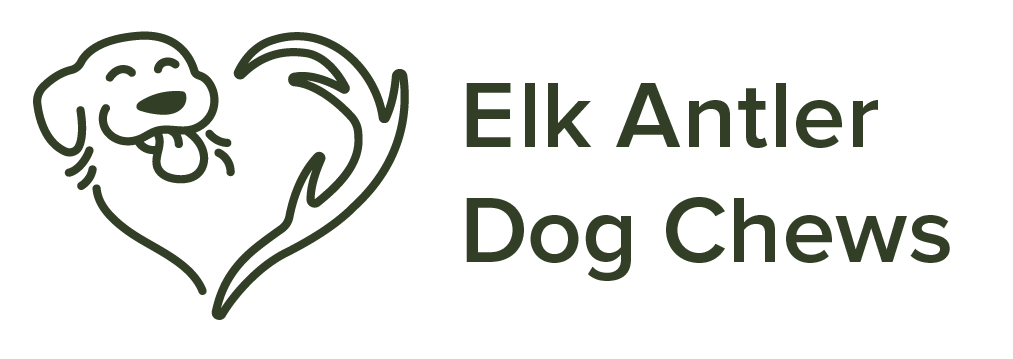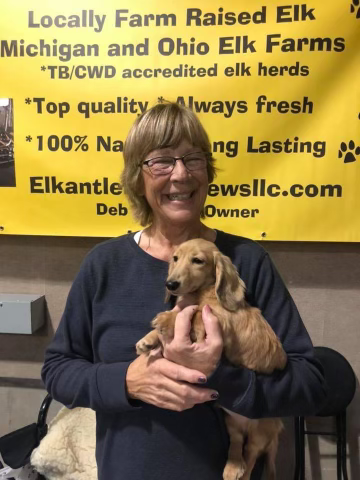Meet Deb
“The Antler Lady from Michigan”
Deb raised elk for years, including several bottle babies. She founded Elk Antler Dog Chews, LLC in 2012 to repurpose antler that was harvested before the rut. In her spare time, she keeps busy watching her youngest grandchildren and has found joy in beekeeping.
About Elk Antler
No animals are harmed or killed when we harvest antlers.
Natural, Sustainable, and Cruelty-Free
Antlers are unique to the Cervidae family, which includes elk, whitetail deer, and caribou. Animals shed their antlers annually and grow a new, larger set the next year. The horns of the Bovidae family — such as cattle and bighorn sheep — are grown once per lifetime. If horns are removed, they won’t grow back. Elk antler is a renewable resource, and elk are not harmed or killed to harvest antlers.
Our antler is not treated in any way — it’s simply allowed to dry and then sold for your dog to do the rest.
Where Our Antler Comes From
All of our antler comes from two TB/CWD accredited, farm-raised elk herds in Michigan and Ohio. The elk are well fed and healthy, which contributes to the great quality, large amounts of marrow, and huge pieces of antler we can obtain and cut into dog chews.
Why Elk Antler?
Elk antler doesn’t splinter. As your dog chews, antler chips into small pieces that are safe to swallow. Smaller antlers, like deer antler, can become too calcified and are prone to splintering or breaking.
Larger, softer elk antlers are more marrow-rich than deer antler. The marrow center is what dogs love — they’ll spend hours chewing to remove the marrow from the antler.
One chew can last several weeks to months or even years, depending on the dog and its chewing tendencies, the size of the antler piece purchased, and whether the antler has been split or left whole.
Antler Composition
An analysis of our antler grind showed that it is made primarily of calcium and phosphorus with a few trace minerals.
The Antler Growth Cycle
Antler Growth
Each year, elk begin growing a new set of antlers in the spring.
During the growth period the antlers are full of blood, very tender, and covered in a very soft, furry covering called velvet. Elk are very careful not to injure the antlers at this stage of growth, as a blow to an antler in velvet can damage it severely. Antlers can grow up to two inches a day, making elk antler the fastest-growing organ on a mammal aside from the moose antler.
Velvet and the Rut
By the end of August, most bulls have fully grown antlers. They are sufficiently calcified that damage to them is rare.
Over the next month, the bulls begin to peel the velvet from their antlers by rubbing them against trees and vegetation. This is a sure sign that the rut, or mating season, is not far off. Removing the antlers at this stage ensures that bulls will not harm or kill each other during the rut.
By the time farm-raised elk antlers are removed, most bulls will have peeled the velvet from their antlers; however, there are always a few who have not taken the initiative to do so yet. Those are the white pieces of antler you may see. They are just as durable and safe as the pieces that are colored from bulls rubbing their antlers against trees. In the spring, the elk will shed their “burrs” or “buttons” instead of whole antlers.



